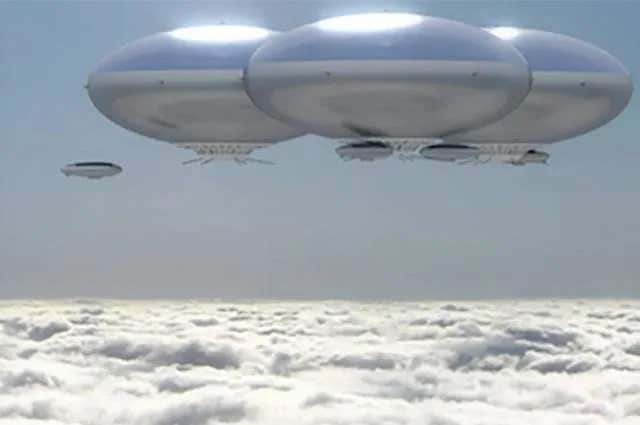Could humans build floating cities on Venus?
Scientists are exploring how to terraform Mars and build floating habitats on Venus for future human settlement.

Researchers are designing ways to build floating cities in Venus’s skies. Their work could define humanity’s next great leap.. (CREDIT: NASA / Wikimedia Commons)
The dream of living on another planet has intrigued scientists, engineers, and explorers for a long time. Now, the dream is moving closer to becoming a reality with researchers at the University of Central Florida (UCF) and beyond exploring how human beings could one day build thriving communities away from the planet. From creating breathable air on Mars to finding stable energy reserves in Venusian skies, all of these missions belong to a larger mission ensuring the survival of our species—and extending science's boundaries.
Redesigning Mars into a Habitable World
UCF Planetary Scientist and Astrobiologist Ramses Ramirez is leading the research into how to heat and render Mars liveable again. His focus is on terraforming—a modification of the planet's environment to make it more Earth-like. With Martian nanoparticles, Ramirez believes that it may be feasible to heat the planet's surface so that it will be capable of supporting liquid water and plant life. "Ultimately, I'm interested in finding life on other planets," Ramirez says. "And if it's not there, then we should become that life on that planet.".
His study of Mars' ancient climate indicates it was once more Earth-like, with valleys and rivers. These are indicators the planet had an atmosphere dense enough to harbor liquid water in the past. The next question is whether any of those resources still exist—and, if not, how to locate alternatives. "Does Mars still have enough of those resources that it once did?" Ramirez asks.
"And if they do not exist, then how are we going to create the gaps so that it can be as good as before?
Terraforming Mars
Living on Mars means overcoming extreme cold. The average surface temperature is about minus 80 degrees Fahrenheit—far too low for human survival or plant growth. Ramirez's idea would employ Martian dirt to grow microscopic cylindrical nanorods that are smaller than specks of glitter. Discharged into the atmosphere, they would trap solar energy near the surface and create a greenhouse effect.
According to his research, this method could raise temperatures to around 30 degrees Fahrenheit—enough to start melting ice and supporting simple plant life. The nanorods are 5,000 times more efficient than earlier methods, offering an inexpensive, locally available solution that doesn't require shipping enormous quantities of material from Earth.
Ramirez claims that this technique would apply to other planets with different materials, for example, water vapor or carbon dioxide, depending on the atmospheric composition.
"It can sustain at least Earth-like life, or at least warm enough conditions with high enough pressures and low enough toxicity to survive," he describes.
Finding Food in Martian Soil
While heating the planet is one thing, keeping a colony alive takes sustenance. Researchers have been trying to grow food in Martian soil analogs for decades. One such technology that has developed realistic Mars soil simulants to research plant development is Space Resource Technologies, which originated as an outgrowth of the Exolith Lab at UCF.
The Viking, Curiosity, and Perseverance missions all discovered organic molecules—the building blocks of life—on Mars. That discovery makes scientists think that at some point in the planet's past, it had vegetation or microorganisms. "Those conditions could have led to life on early Mars," Ramirez says. "That life would then die and hopefully be fossilized." No such fossils have been found, but the evidence suggests Mars once had many of the compounds necessary for life.
Powering Life Beyond Earth
There needs to be constant power sustaining life on Mars, or anywhere for that matter. Solar power has sustained rovers like Spirit and Opportunity, but dust storms and long nights can make sunlight inconsistent. That is why NASA is researching nuclear fission devices that would provide 40 kilowatts of continuous power—enough to power about 30 homes—for as long as a decade. These small, lightweight reactors would drive habitats through even the blackest nights.
Because Mars has a 24-hour, 37-minute day, just like the day on Earth, solar energy is also a possibility there. "I don't see power being a major problem on Mars," Ramirez says. Venus and other planets are tougher, though. With slow-spinning rates and dense atmospheres, they need more creative solutions to energy.
Scientists have proposed solar planes for Venus floating in its upper atmosphere, where it is less inhospitable. The planes would collect sunlight and store energy in rechargeable batteries and then transfer the energy to surface landers via laser power. The landers would convert the laser energy to electricity with converters—an ambitious proposal that could one day power long-duration missions in hostile climes.
Floating Above the Clouds of Venus
Venus seems like an odd target for colonization. Surface pressure is 90 times that on Earth, and lead melts in the temperatures. However, around 31 miles above ground level, the atmosphere is surprisingly Earth-like. Temperatures and pressures here are far more similar to Earth's, leading scientists to imagine floating cities or research stations cruising through the clouds.
Venus is nearer to Earth than Mars, so trips will be shorter and cheaper. Its thick atmosphere offers more protection from cosmic radiation, and venturing into it could provide valuable data on climate change. Ramirez also notes that while it would be nearly impossible to mine the surface of Venus, the carbon dioxide gases on the surface could be piped out and converted into oxygen to support life on top.
"Scientists would need to learn how to cope with the corrosive acid in the atmosphere and make the environment safe for aircraft," he says.
"That way, if things go wrong, astronauts there would be safe."
For Ramirez, the project is not merely about engineering—it's about imagination and survival. "I am excited to help pioneer UCF's vision to send humans to other worlds," he says. "We have the resources and money at this university to make large dreams like this a reality." His research combines planetary science and astrobiology with the purpose of finding out how planets are able to become habitable—and how we can make new ones home.
Practical Uses of the Research
Research in terraforming could someday allow people to live beyond Earth, providing a backup long-term civilization. Techniques such as nanoparticle-based warming and in-situ resource utilization can lower the astronomical expense of bringing materials from Earth.
These advances can also change how we do climate engineering on Earth, from carbon capture to optimizing renewable energy.
While planetary science pushes the study of habitability, it also propels technology, agriculture, and the energy system towards developments that can benefit space settlers as well as life on Earth.
Related Stories
- Venus's clouds contain massive reservoirs of water and iron
- Scientists develop new process to build homes on Mars using fungi and bacteria
- Scientists may have found the right location to begin living on Mars
Like these kind of feel good stories? Get The Brighter Side of News' newsletter.
Joseph Shavit
Science News Writer, Editor-At-Large and Publisher
Joseph Shavit, based in Los Angeles, is a seasoned science journalist, editor and co-founder of The Brighter Side of News, where he transforms complex discoveries into clear, engaging stories for general readers. With experience at major media groups like Times Mirror and Tribune, he writes with both authority and curiosity. His work spans astronomy, physics, quantum mechanics, climate change, artificial intelligence, health, and medicine. Known for linking breakthroughs to real-world markets, he highlights how research transitions into products and industries that shape daily life.



